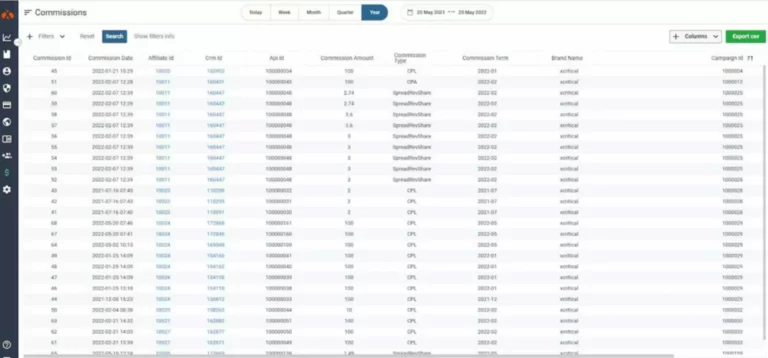Content
A break above a resistance level might signify a good entry point, as it indicates a Stockbroker strong upward momentum. Conversely, a dip below a support level can be a warning sign to exit a position or even to short sell. The ability to discern whether a market is in an uptrend, downtrend, or moving sideways allows traders to align their strategies accordingly. Recognizing these patterns gives traders the confidence to make informed decisions, as they are basing their moves on tested and proven market behaviors. One of the most common tools in the arsenal of a technical analyst is the moving average.
What is your current financial priority?
The more wide vertical lines – https://www.xcritical.com/ candles – portray differences between the opening and closing price. The red candles show when the closing was below the opening price, and the green ones offer a time when the opening price was below the closing price. For example, a cup and handle formation for one analyst could be random price fluctuations for another. Discretion and judgment are required, introducing the possibility of mistaken Analysis. For example, one analyst may spot a head and shoulders top pattern indicating a reversal, while another may see it as a continuation pattern. Traders should get multiple opinions rather than rely on a single analyst’s interpretation.
Understanding Technical Analysis
- If enough traders recognize a particular pattern as bearish, they will sell or short the stock when they see it.
- Analysts use charts and technical indicators, such as moving averages and Relative Strength Index (RSI), to identify trends and potential entry or exit points.
- The core principle underlying technical analysis is that the market price reflects all available information that could impact a market.
- On charts, resistance lines are visualized as horizontal and start at the recent most extreme price peak, with the line pointing toward the future on the time axis.
Technical analysis existed and was practiced before computers were common, and some of the pioneers in technical analysis were long-term investors and traders, not day traders. Technical analysis is used by traders on all indicator tools for trading time frames, from one-minute charts to weekly and monthly charts. Enrich your understanding of technical analysis by reading books and articles, taking online courses, and attending workshops. Practice your skills using a demo trading account, which allows you to apply technical analysis in real-time market conditions without risking real money. Engage with trading communities through online forums, social media groups, or local meetups to gain valuable insights, feedback, and support.
Technical Analysis of Stocks and Trends Definition
While fundamental and technical analysis has some similarities, they significantly differ in approach and methodology. Trend lines connect two or more price points and can be used to identify trends in a stock’s price movement. An example of fundamental analysis is using the price-to-earnings (P/E) ratio to evaluate a company’s stock. While both approaches have strengths and weaknesses, investors can use them together to achieve better investment results. Investors can choose the approach that best suits their needs by considering their investment goals, risk tolerance, and time horizon. If a large number of traders have done so and the stock reaches this price, there will be a large number of sell orders, which will push the stock price down, confirming the movement traders anticipated.
Thus, technical analysts argue that all one really needs to analyze and predict future price movements is encapsulated in the price chart. You know if technical analysis is working if you can backtest the trading rules. Backtesting involves applying historical data to a trading strategy to see how it would have performed in the past. If the strategy consistently shows positive results over a significant period and across various market conditions, it might be considered effective.
Additionally, the psychological biases of traders, such as overconfidence or herd behavior, can exacerbate the inaccuracies in technical analysis. Stay updated with market news and economic events to understand how real-world events can impact technical analysis and price action. Regularly review your past trades to identify areas for improvement and learn from your successes and failures. Finally, be patient and persistent, as learning technical analysis takes time and dedication. By following these steps, you can develop a strong foundation in technical analysis and improve your ability to make informed trading decisions.

Unexpected geopolitical incidents, surprise earnings reports, or unforeseen macroeconomic data releases can dramatically affect security prices. This predictable repetition stems from market psychology and the collective behavior of market participants. Generally, Fundamental Analysis is used to focus on a security’s long-term profitability, whereas Technical Analysis is used for anticipating short-term patterns which can be leveraged for short-term profits.

An adaptive approach attentive to both quantitative form and qualitative substance offers the most robust framework for informed participation in fluctuating valuations. TA traders also look for historically bullish patterns and bearish patterns in stock charts that serve as signals of when to buy or sell a stock. Head-and-shoulders, flags, wedges, cup-and-handles and double/triple tops and bottoms are common examples of these patterns. RSI traders typically sell or short “overbought” stocks when RSI is above 70 and buy “oversold” stocks when the RSI drops below 30. While this strategy might seem like it is matching up the intention of predicting behaviour, it isn’t actually predicting the price in any substantial way, therefore not of any use in the long run.
Next, if you’re going to learn fast, seek assistance from a professional trader. They can teach you everything in-depth in one-on-one sessions or practice backtesting for a more cost-effective option. It’s best to start with reading weekly or monthly charts, as long-term patterns give a good overview and perspective, as short-term views can often be misleading.
In this concluding section, we offer a final verdict on the reliability of technical analysis and provide you with additional resources for further learning and application. Volume is often overlooked but is an essential component of technical analysis. Volume can confirm the strength of a pattern or signal; for instance, a breakout from a resistance level accompanied by high volume is often considered more reliable than the same move with low volume. Moreover, sceptics argue that if everyone follows the same patterns and indicators, the advantage is lost, rendering technical signals ineffective over time. Both indicators and oscillators can be used to confirm trends and generate trading signals, making them indispensable tools in the toolkit of a technical analyst. However, it’s important to note that while historical data is useful, it’s not infallible.
Always make sure you practice with a trading demo account before you decide to use your own capital. This ensures that you understand how technical analysis (or any other strategy you decide to take) can be applied to real-life trading. If the A/D starts falling while the price rises, this signals that the trend is in trouble and could reverse.
The patterns identified may not necessarily have predictive power and could result from random market movements. Furthermore, overfitting is a common issue in backtesting, where the model is excessively tailored to historical data, losing its effectiveness in live trading environments. Skeptics also point out that technical analysis relies heavily on the assumption that history repeats itself, which may not always hold true in the dynamic and ever-evolving market landscapes. Therefore, while backtesting can provide some insights, it is essential to combine it with other methods and maintain a critical perspective. Chart patterns are a subjective form of technical analysis where technicians attempt to identify areas of support and resistance on a chart by looking at specific patterns.
All such information is provided solely for convenience purposes only and all users thereof should be guided accordingly. However, its subjectivity, limited effectiveness in news-driven events, and the oversight of fundamental factors serve as notable limitations. This is contrasted with Fundamental Analysis in which investments are evaluated by the financial performance of a company as evidenced through fundamental ratios such as gross margin and ROI.
Technical analysis is used to develop trading strategies based on market data such as trade volumes rather than higher level macroeconomic events. Learn what technical analysis is, how it can be used by traders and investors, and how it compares to fundamental analysis. Technical analysis is used to develop trading strategies based on market data such as trade volumes rather than higher-level macroeconomic events. In a simple explanation, fundamental analysis defines whether the stock might be trading under or over its listed value by looking at the fundamentals. In contrast, technical analysis assumes the price is already correct and attempts to forecast future price movements instead. Technical analysts rely on patterns and trends found in charts to predict future price movements.
The subjectivity inherent in technical analysis arises from its reliance on individual interpretation, discretionary pattern recognition, and personal biases. This variability in approach and analysis can lead to inconsistent results and is a key reason why technical analysis is often criticized. CFDs are complex instruments and come with a high risk of losing money rapidly due to leverage.





